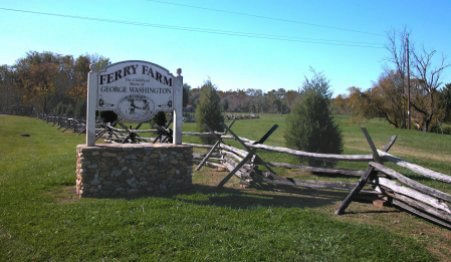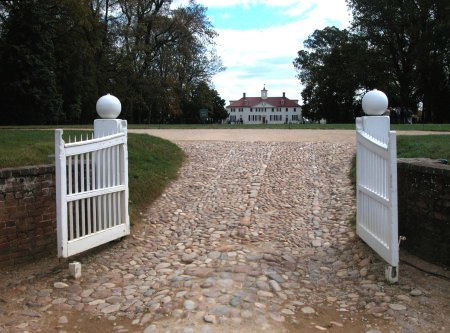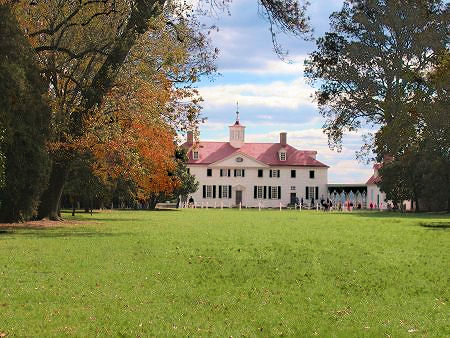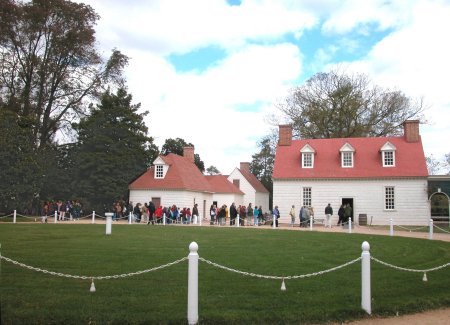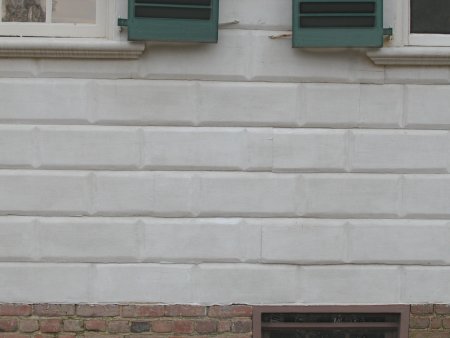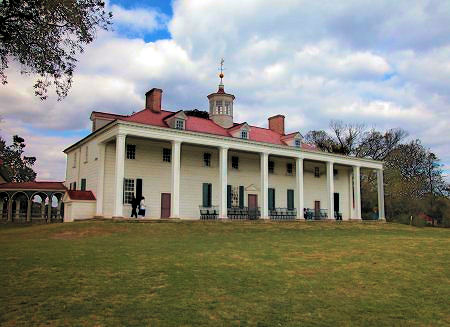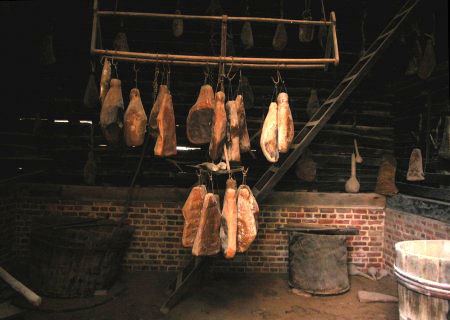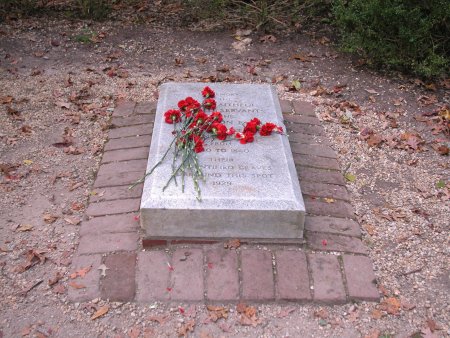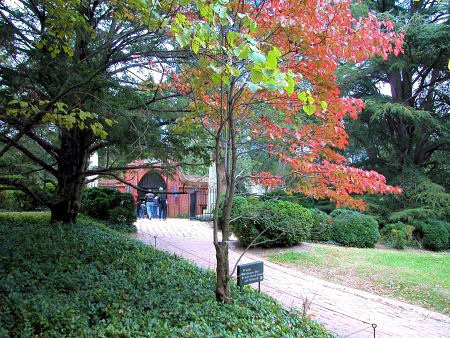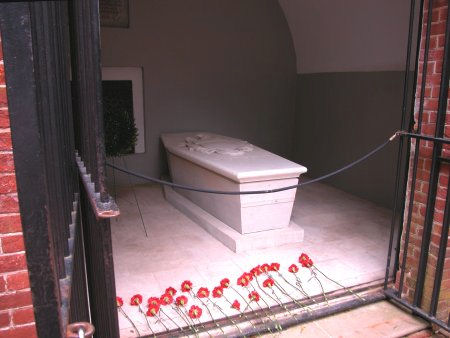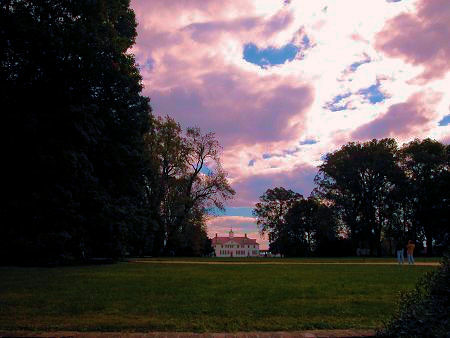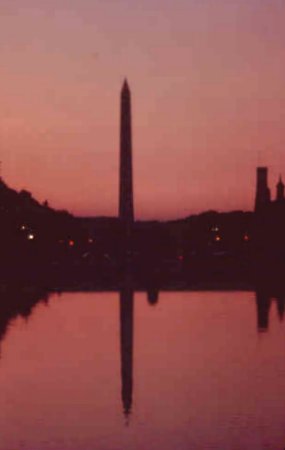












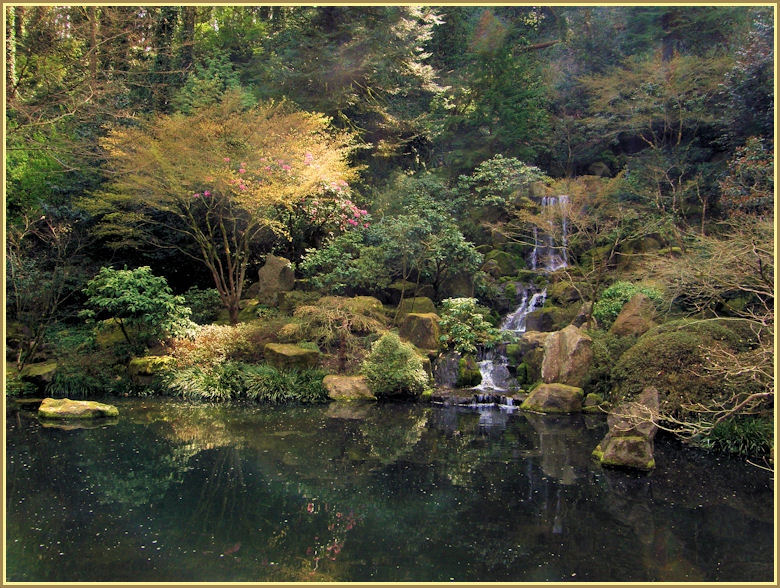




More of Don's
photo series.
Presidents' Places: George Washington

George Washington Birthplace National Monument
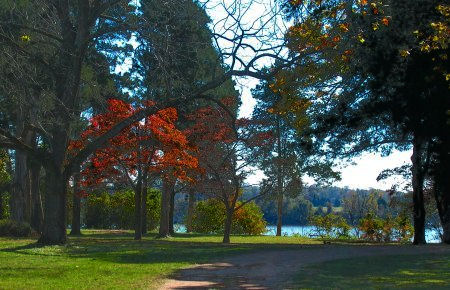

George Washington Birthplace National Monument

George Washington was born in this place, the Popes Creek tobacco plantation, on February 22, 1732. He lived on this plantation as well as the Ferry Farm plantation and the Mt. Vernon plantation as he was growing up.
This is the foundation of the house George was born in; the house itself burned down in 1779. This National Monument is operated as a model, recreating some of the activities of a colonial plantation.
Most of George's formative years were spent at Ferry Farm, a plantation across the Rappahannack from Fredericksburg, Virginia, where in those days there was a ferry. As of 2003, it is mostly an archeological site.
George (nobody called him George after he grew up, except maybe his mother and close relatives; he was aloof to a fault, and most people were circumspect about calling him anything at all) lived at Mt. Vernon on and off all his life, in 1754 he acquired the estate and moved there with his wife Martha and her children.
This is the pretty side of Mt. Vernon, I think. It is the west-facing, landward side, from which you would approach the mansion if you were coming by land. A welcoming, attractive home, indeed.
I went through the mansion many years ago, but this time the line of people waiting to get in was so long, I just didn't want to stand in the hot Virginia sun long enough to take the tour. But as I recall, the inside was very nice and worth a visit.
Oddly enough, the building is constructed of wooden blocks, or at least that's what it looks like. Actually, long boards were beveled to look like blocks, a method called "rustication." Sand was was blown onto the paint to make the appearance of stone.
This is Mt. Vernon from the east, Potomac side. If you were visiting the Washingtons, and coming by boat, this is what you would see as you approached. As roads were very poor in those days, my guess is that most visitors came by boat.
One of these breezeways goes from the mansion to the kitchen; the other goes from the mansion to the "servants' quarters," whatever that means, probably the quarters of the slaves who worked in the big house. Although the east front is attractive also, I felt that these breezeways were the most attractive parts of Mt. Vernon.
This is the Clerk's Quarters; he was hired to maintain the accounts of the plantation.
This is the laundry room.
The kitchen. Most of the kitchens of the colonial homes were not attached to the main building, because of the danger of fire. Also, it was nice to keep the heat of the kitchen away from the living quarters in warm climates such as Virginia.
And this is the smokehouse, where the slaves cured those delicious Virginia hams under the watchful eye of the lady of the house.
Several hundred slaves labored at Mt. Vernon over the years. Those who died there were buried in a plot in unmarked graves. When I visited Mt. Vernon in the 1970's, no one there referred to "slaves"; they were "servants." But now, two hundred years after George Washington's death, the hard-working unpaid lifetime residents of Mt. Vernon are partially given their due; they are at least spoken of, and their burial plot is marked with a monument and this symbolic grave.
Well, you know, I am sure, the story of George Washington leading American troops in the American Revolution, his leadership role in the Constitutional Convention, and election as first President of the United States. This spot in New York City is where he took the oath of office as President. (New York was the first capital city, then Philadelphia; John Adams was the first President to reside in Washington, D.C.)
Federal Hall at that time looked like this model, which is inside the present building. George Washington was an accomplished person in many ways, but to me his greatest accomplishment was that he willingly gave up power at the end of his term. That is something practically no ruler in history had ever done, and his setting of this tradition is one of the important reasons the United States has survived over 200 years. Let's hope the present and future leaders of our country continue leaving when their time is up.
After serving as America's first President for almost eight years, George Washington retired to his beloved Mt. Vernon and spent his remaining two years there, running the farm and living the life of a Virginia Planter. He died just as the 18th century was coming to a close.
He is entombed here, where his memory is kept alive by the thousands of people from all over the world who come here to honor him.
The Washington Monument, in Washington, D.C., was constructed in his honor in the 19th century, a fitting memorial to the man who was Number 1 in the hearts of his countrymen (and countrywomen, and countrychildren).
Comments.
All photos on this site ©Donald L. Mark 1973-2007 Back to "Presidents' Places" Index

